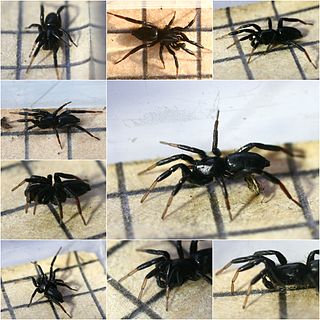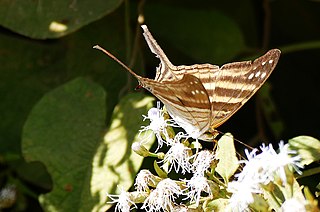
The Lord Howe gerygone or Lord Howe gerygone flyeater was a small bird in the family Acanthizidae, brown and greyish in color. Its head was brown apart from a pale grey eye-ring and a grey throat and chin, many parts of the animal varied to the colour of yellow, this being apparent in its bright yellow belly. It made its home in the canopies of the island's forest until the early 20th century. The bird has had a variety of monikers: locally, it was known as the "rain-bird" due to its activity after the rains, or the "pop-goes-the-weasel", due to the similarity of its song to the well-known tune. The bird was endemic to Lord Howe Island in the Tasman Sea. There have been no records of the species since 1928, and it is considered to be extinct. Its extinction is almost certainly due to predation by black rats which were accidentally introduced to the island in 1918 following the shipwreck of the SS Makambo there.

Drassyllus is a genus of ground spiders that was first described by R. V. Chamberlin in 1922.
Drassyllus lepidus is a spider in the family Gnaphosidae, in the infraorder Araneomorphae . The distribution range of Drassyllus lepidus includes the US and Mexico.
Sosticus insularis is a spider in the family Gnaphosidae, in the infraorder Araneomorphae . The distribution range of Sosticus insularis includes the USA and Canada.
Endeodes insularis is a species of soft-winged flower beetle in the family Melyridae.
Lobiopa insularis is a species of sap-feeding beetle in the family Nitidulidae. It is found in the Caribbean Sea, Central America, North America, and South America.
Drassyllus novus is a species of ground spider in the family Gnaphosidae. It is found in the United States and Canada.
Drassyllus covensis is a species of ground spider in the family Gnaphosidae. It is found in the United States.

Marpesia chiron, the many-banded daggerwing, is a species of daggerwings, map butterflies in the family Nymphalidae. It is found in Central America, North America, and South America.
Drassyllus niger is a species of ground spider in the family Gnaphosidae. It is found in the United States and Canada.
Drassyllus fallens is a species of ground spider in the family Gnaphosidae. It is found in the United States and Canada.
Drassyllus depressus is a species of ground spider in the family Gnaphosidae. It is found in the United States and Canada.
Drassyllus creolus is a species of ground spider in the family Gnaphosidae. It is found in the United States and Canada.

Selenops insularis is a species of flatty in the spider family Selenopidae. It is found in the United States and Greater Antilles.
Drassyllus aprilinus is a species of ground spider in the family Gnaphosidae. It is found in the United States and Mexico.
Leucochrysa insularis is a species of green lacewing in the family Chrysopidae. It is found in the Caribbean Sea, Central America, and North America.
Xenoctenidae is a family of araneomorph spiders separated from Miturgidae in 2017.
Indopadilla is a genus of spiders in the jumping spider family Salticidae.




